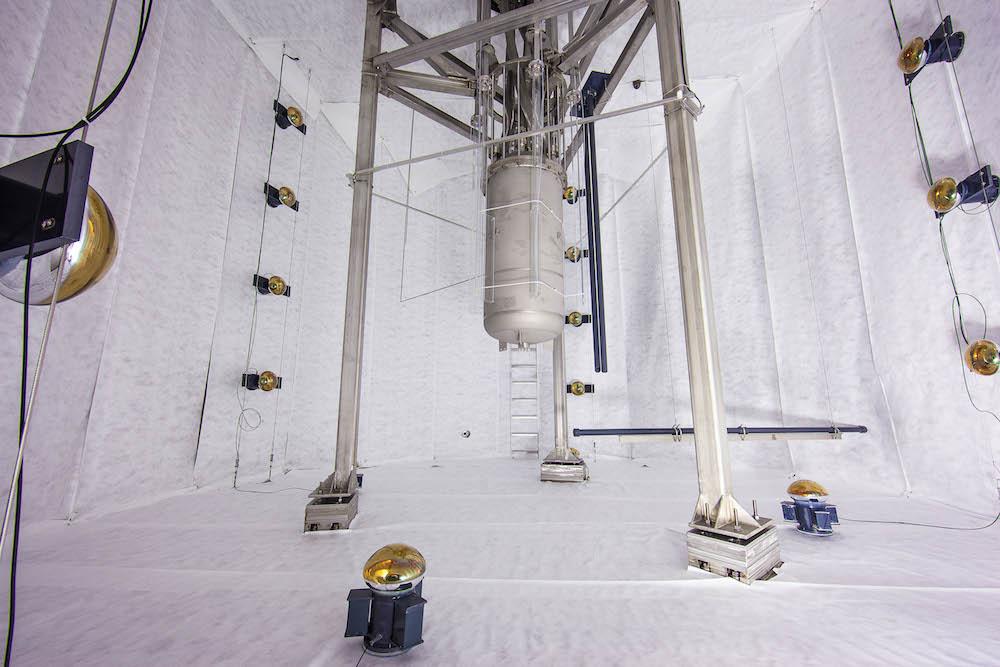Huge dark matter experiment finds nothing, despite burying giant machine in disused gold mine
Not finding dark matter is still useful, because it tells scientists what the elusive stuff can’t do

Your support helps us to tell the story
From reproductive rights to climate change to Big Tech, The Independent is on the ground when the story is developing. Whether it's investigating the financials of Elon Musk's pro-Trump PAC or producing our latest documentary, 'The A Word', which shines a light on the American women fighting for reproductive rights, we know how important it is to parse out the facts from the messaging.
At such a critical moment in US history, we need reporters on the ground. Your donation allows us to keep sending journalists to speak to both sides of the story.
The Independent is trusted by Americans across the entire political spectrum. And unlike many other quality news outlets, we choose not to lock Americans out of our reporting and analysis with paywalls. We believe quality journalism should be available to everyone, paid for by those who can afford it.
Your support makes all the difference.Scientists spent £7 million and many years burying a giant machine in a disused gold mine to look for dark matter – and found nothing.
The huge Large Underground Xenon (Lux) experiment aimed to find evidence of the mysterious hidden material that makes up more than four-fifths of the mass of the universe – but we have never actually seen. But it finished 20-month run this year, with no sign of the still perplexing stuff.
The experiment was operated in an old, disused gold mine underneath a lie of rock in Dakota’s Black Hills. It was made up of sensors placed in a 72,000 gallon tank of extra-pure water, which aimed to see little flashes of light that emerged when dark matter particles collided with xenon atoms.
But the sensors didn’t pick up anything in the 20-month run that finished in May this year.
The experiment was looking out for weakly interacting massive particles (Wimps), the best candidate for dark matter.
But the fact that nothing was found doesn’t mean the experiment wasn’t a success, said scientists. Not seeing them shows the limits of their previous model – and helps them make a case that they should build an even bigger detector that will be 70 times more sensitive.
Dr Cham Ghag, from University College London, one of a number of British scientists involved in the experiment, said: "We've probed previously unexplored regions of parameter space with the aim of making the first definitive discovery of dark matter. Though a positive signal would have been welcome, nature was not so kind!
"Nonetheless, a null result is significant as it changes the landscape of the field by constraining models for what dark matter could be beyond anything that existed previously."
Scientists know large quantities of dark matter are out there because of the way its gravity affects the rotation of galaxies and bends light.
But although it appears to play a key role in binding together and shaping the cosmos, dark matter cannot be seen with conventional telescopes or instruments.
According to the Wimp theory, billions of ghostly dark matter particles pass unnoticed through us every second.
Leading Lux investigator Professor Rick Gaitskell, from Brown University in the US, said: "Lux has delivered the world's best search sensitivity since its first run in 2013.
"With this final result from the 2014 to 2016 search, the scientists of the Lux Collaboration have pushed the sensitivity of the instrument to a final performance level that is four times better than the original project goals.
"It would have been marvellous if the improved sensitivity had also delivered a clear dark matter signal. However, what we have observed is consistent with background alone."
A new Wimp hunting experiment, Lux-Zeplin (LZ), is due to replace Lux at the Sanford Underground Research Facility.
It will have a much bigger 10-tonne liquid xenon detector.
Additional reporting by agencies
Join our commenting forum
Join thought-provoking conversations, follow other Independent readers and see their replies
Comments